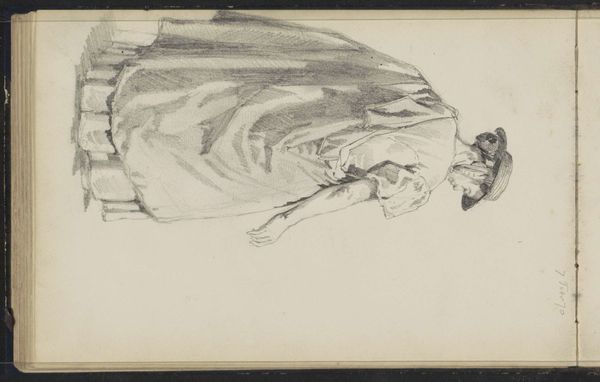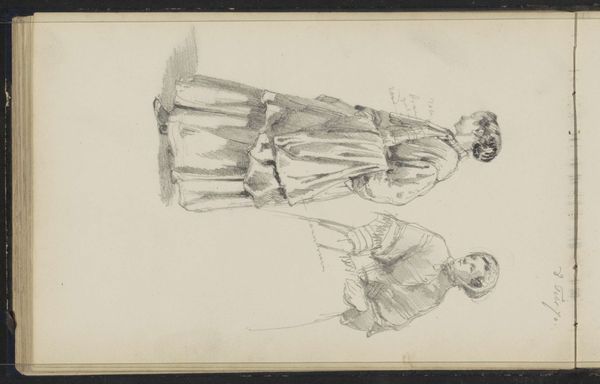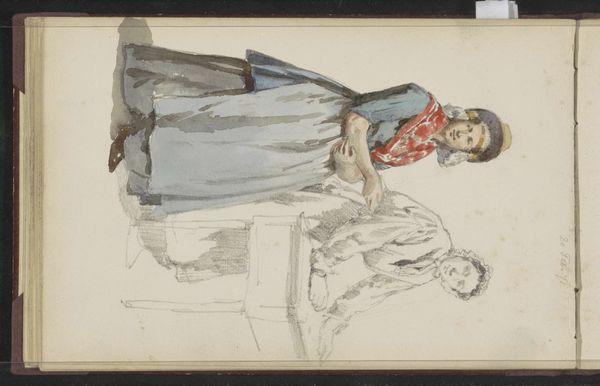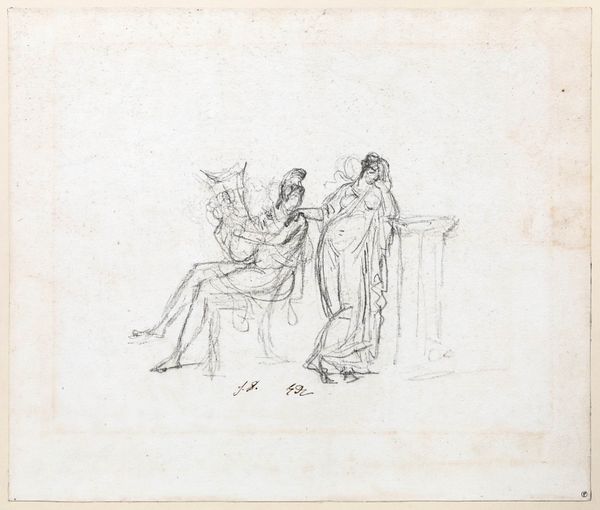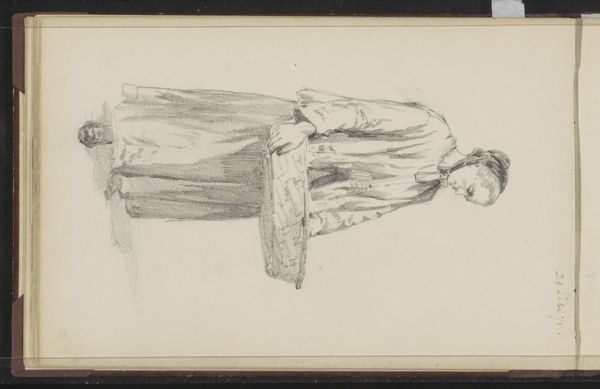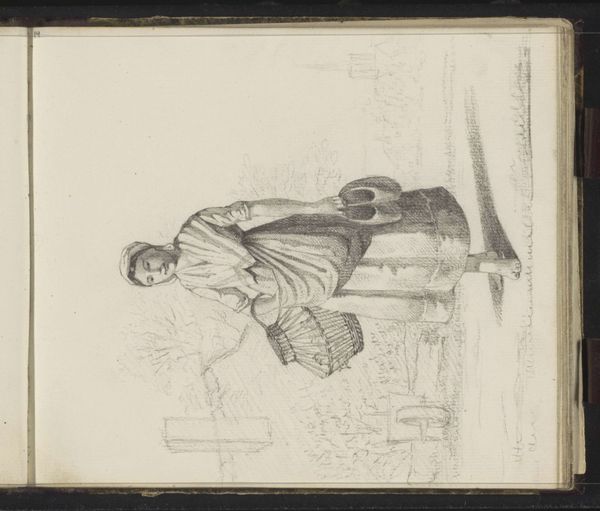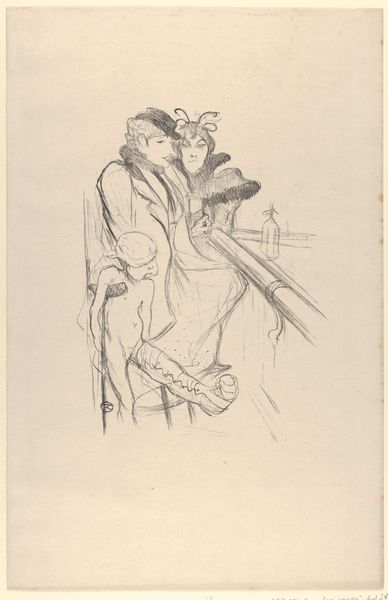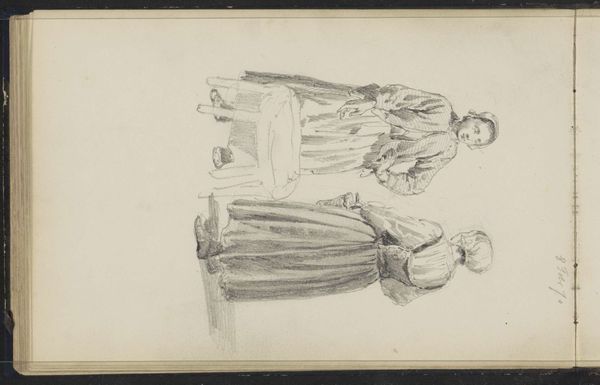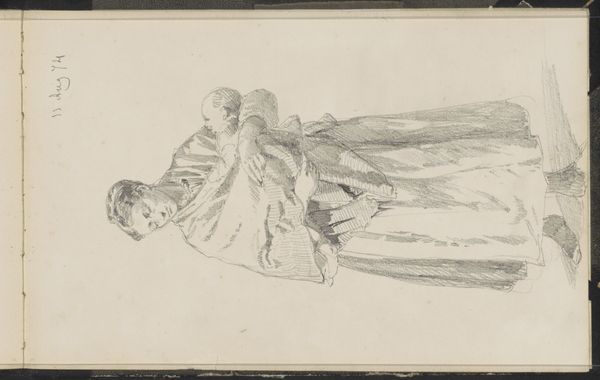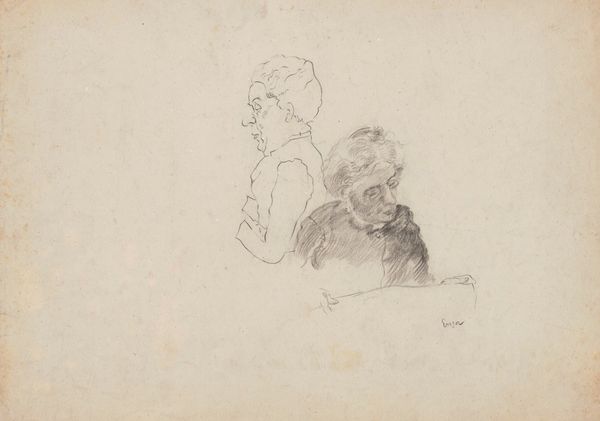
drawing, paper, pencil
#
drawing
#
paper
#
pencil
#
genre-painting
#
realism
Dimensions: height 225 mm, width 295 mm
Copyright: Rijks Museum: Open Domain
Curator: This drawing, "Twee kaartspeelsters," or "Two Card Players," was created by Willem Cornelis Rip in 1874. It’s rendered in pencil on paper. Editor: It feels very intimate. I’m struck by the quiet intensity etched on their faces, and the textures Rip manages to suggest with just pencil. You can almost feel the smoothness of the cards. Curator: Genre paintings like this one became popular in the mid-19th century as they depicted scenes of everyday life, appealing to a rising middle class eager to see their own experiences reflected in art. It represents a broader societal shift towards the democratization of art. Editor: I see what you mean about reflecting everyday life. But it's more than just representation; consider the specific tools here: pencil and paper. Those choices suggest accessibility and affordability – materials available to many. Do we know anything about the conditions where this was made, like was it commissioned or part of a series? Curator: Rip, while perhaps not a household name, exhibited regularly, aligning him with the art market. The drawing could have been a study for a larger, potentially painted, composition. Or, perhaps, it served as a work to be reproduced as prints for wider distribution. It is interesting to observe what wasn’t illustrated in such "slice of life" images: images that focus on difficult social problems. Editor: Exactly, who has leisure? I agree about a possible class message. Think about the labour that affords these women time for cards: someone is working so they don't have to. The act of drawing itself involved specific hand movements, pressure applied to the pencil, the grade of the pencil selected; each step reveals a human engagement with matter and labor. Curator: By the time of its creation, photography presented another way to see an easily accessed portrayal of real-world subjects; it seems genre images allowed something that photos did not, though. There is room for imagination and emotion. Editor: It also feels more mediated. While claiming realism, the artist is really inviting viewers into their interpretation. Still, seeing it, I reflect on the real human labor involved. Even today, a work’s perceived value rests so often upon social narratives around labor. Curator: Yes, looking closely at Rip's work offers valuable insights into understanding broader cultural values of his time. Editor: I am leaving this knowing so much about this image! It prompts thinking about art-making and labor.
Comments
No comments
Be the first to comment and join the conversation on the ultimate creative platform.
